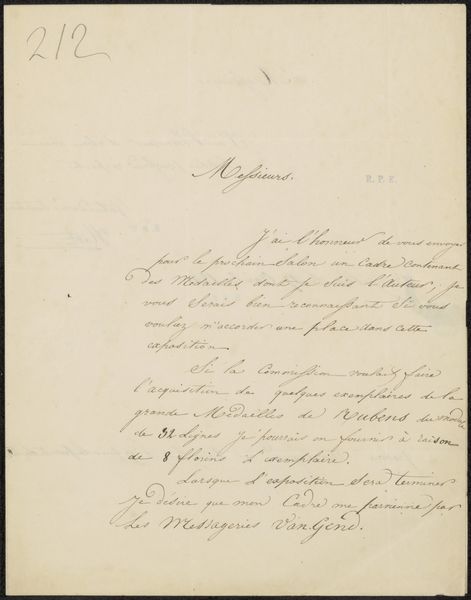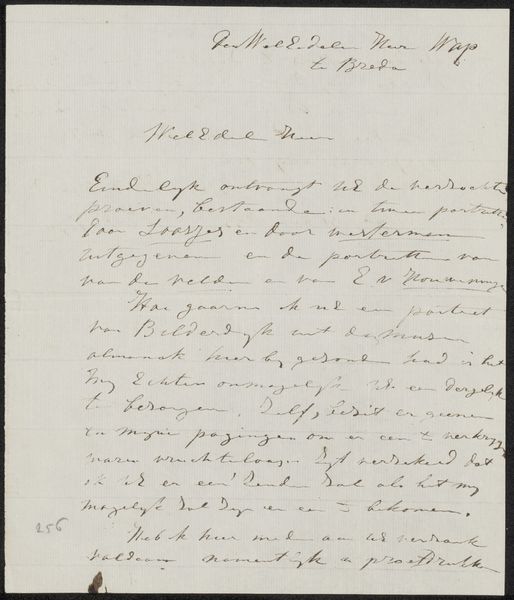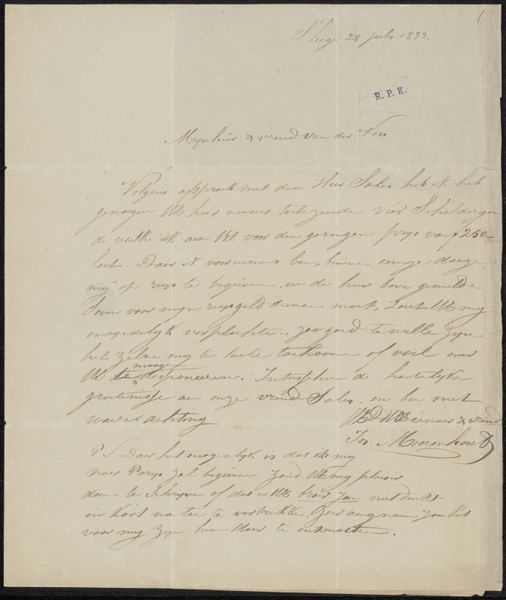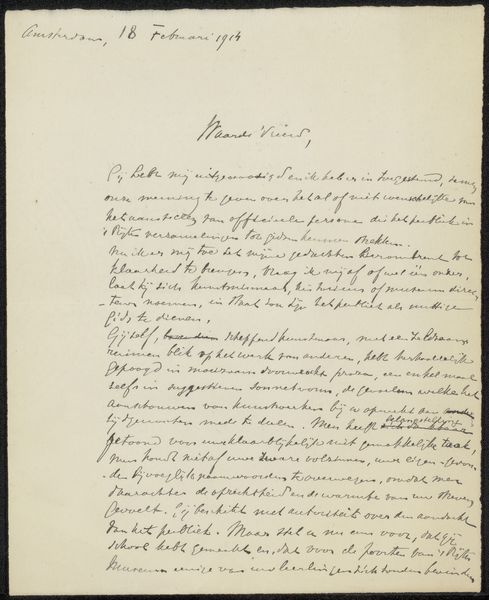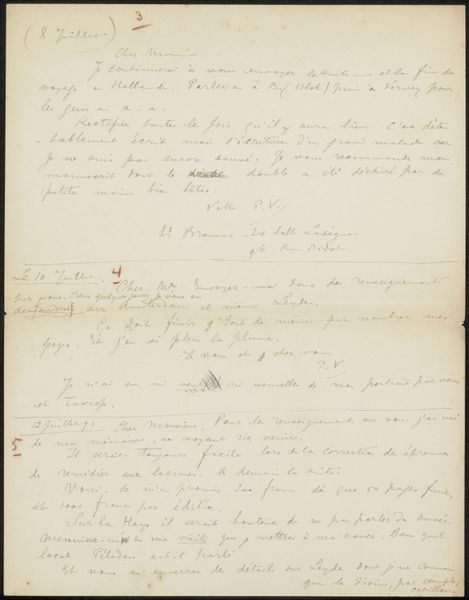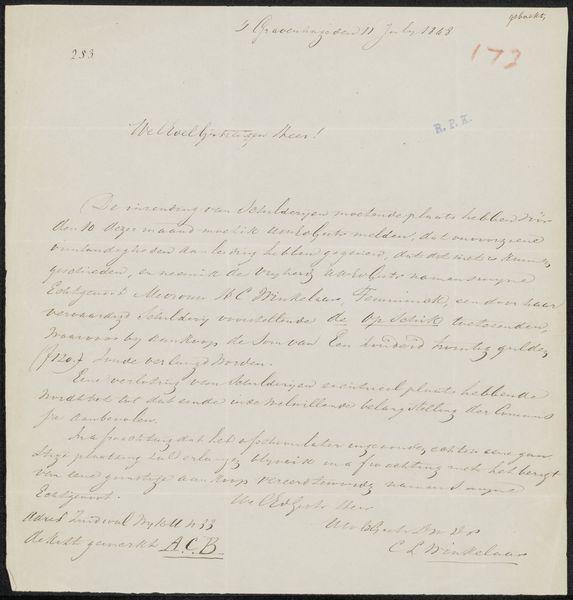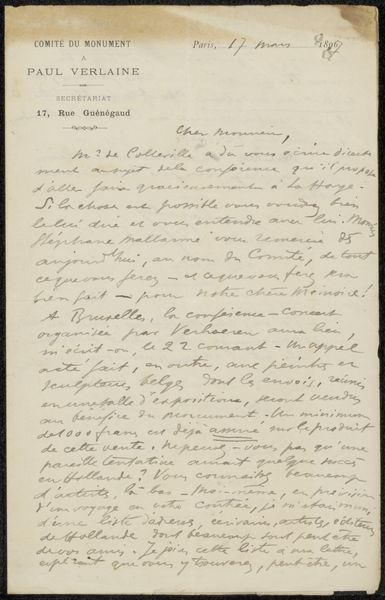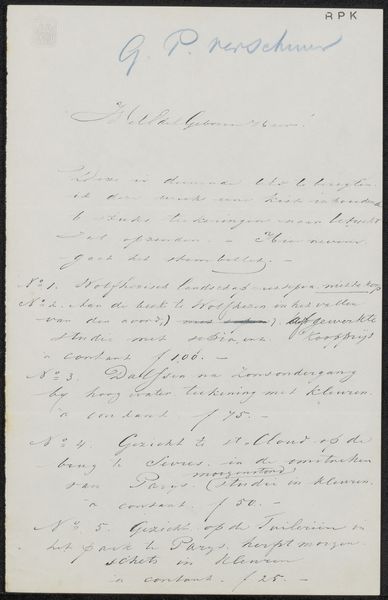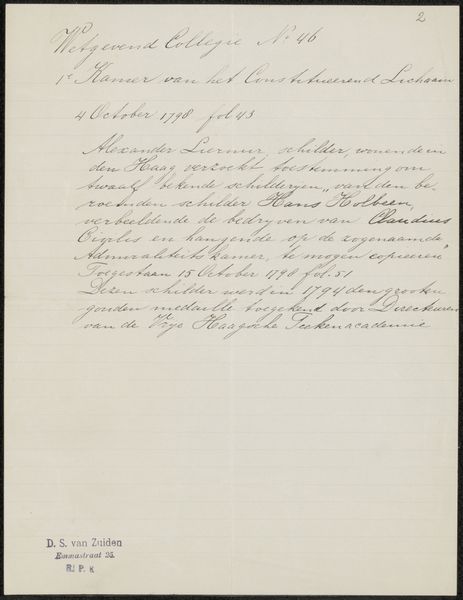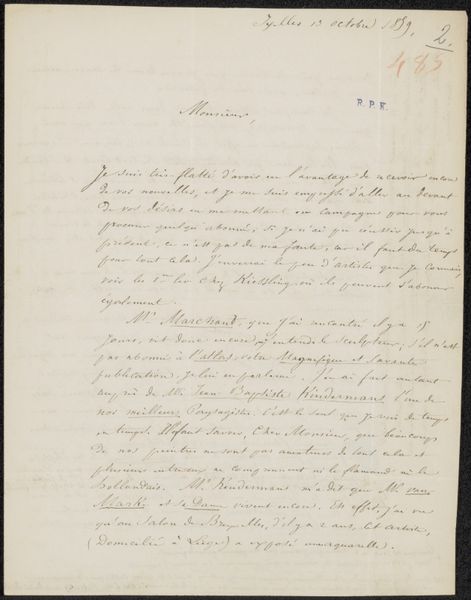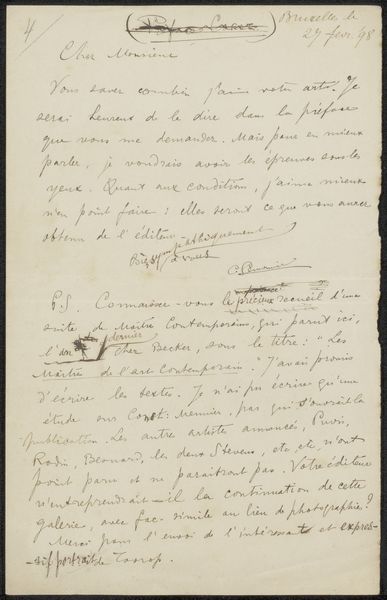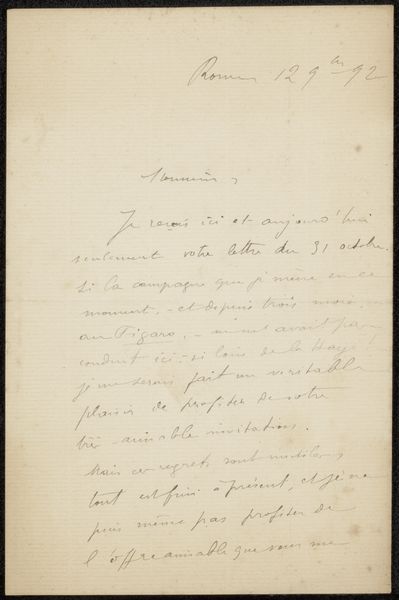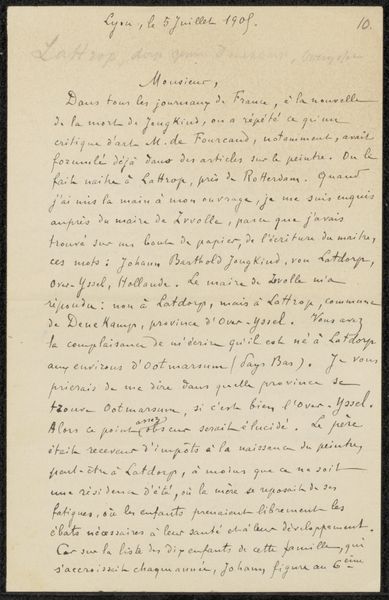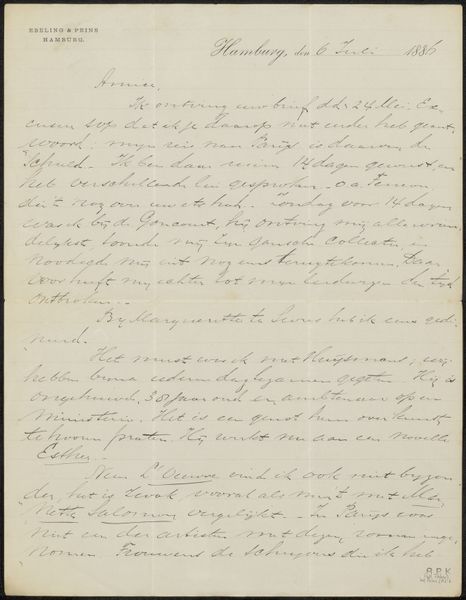
drawing, paper, ink, pen
#
drawing
#
ink paper printed
#
old engraving style
#
hand drawn type
#
paper
#
personal sketchbook
#
ink
#
hand-drawn typeface
#
pen-ink sketch
#
ink colored
#
pen work
#
sketchbook drawing
#
pen
#
sketchbook art
#
calligraphy
Copyright: Rijks Museum: Open Domain
Curator: Here we have "Brief aan Philip Zilcken," a letter created by Adriaan Pit, likely around 1923. The piece is ink on paper, now held at the Rijksmuseum. Editor: My first impression is its intimacy, really. It's a personal letter, scribbled in ink. The tight lines and looping script give it a kind of anxious energy, as if the writer were struggling to capture a fleeting thought. Curator: Considering its public display now, what does that intimate nature tell us about the evolving roles of institutions like the Rijksmuseum? How do we, as viewers, grapple with accessing these intensely personal expressions now transformed into artifacts? Editor: That’s exactly it. There’s the potential for a deep intrusion. As art historians, it's essential to think about the ethical implications of showcasing this letter, right? We must remember these words were likely never meant for public consumption. They reflect, perhaps, a particular exchange, viewpoint or bias. Curator: Absolutely. Examining the socio-political climate of the 1920s in the Netherlands can provide us insight into Pit's state of mind, and relationship with Zilcken. This exchange exists within a network of cultural production, art criticism, and societal expectations. Understanding that milieu enriches our interpretation of his seemingly private missive. Editor: I agree, and this makes me consider Pit's class, education, and access to artistic networks at that moment in history. His handwriting itself – a beautiful, almost calligraphic script – reveals something about that background. Was it intended for specific audiences? Curator: Yes, these visual and textual cues invite layered exploration! For instance, consider the physical act of writing letters in the pre-digital era. How does it relate to ideas around slowing down, thoughtful articulation, and the materiality of correspondence itself, right? What does it mean to then take that and publicly expose it? Editor: Thinking about it, in the grand scheme, the very act of carefully transcribing ideas using pen and ink can almost seem like a form of rebellion. We should value it now for its slow intentionality. Thank you for shedding more light on this piece. Curator: Thank you, exploring "Brief aan Philip Zilcken" together really illuminated the relationship between private gesture, material object and wider societal discourse for me today!
Comments
No comments
Be the first to comment and join the conversation on the ultimate creative platform.
